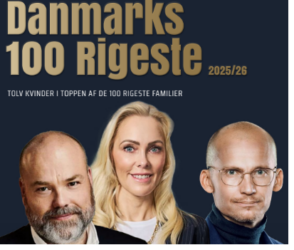Resume af teksten:
Italiens inflationsdata for oktober viser en markant deceleration til 1,2% år-til-år, ned fra 1,6% i september. Denne opbremsning skyldes primært et fald i priserne på reguleret energi og friske fødevarer, mens inflationen for rekreative, kulturelle og personlige plejetjenester er steget. Kerneinflationen, som udelukker energi og friske fødevarer, forbliver stabil på 2%. Priserne på varer er næsten stagneret med en stigning på kun 0,2% år-til-år, mens serviceinflation står stabilt på 2,6%. Business confidence i servicesektoren antyder en afmatning i prisændringer i de kommende måneder. På baggrund af disse udviklinger er prognosen for gennemsnitlig inflation i 2025 nedjusteret fra 1,7% til 1,6%.
Fra ING:
Italy’s October inflation numbers show a marked deceleration. This is very much an energy and fresh food story, against stable core inflation. As we don’t expect an imminent change to the pattern, we’re trimming our forecast for average 2025 headline inflation to 1.6%

A marked slowdown in food price inflation helped the overall numbers
Preliminary data for October show Italian headline inflation slowing markedly to 1.2% year-on-year, down from 1.6% in September, a deceleration well beyond expectations. The main drivers were a pronounced slowdown in regulated energy and fresh food prices, more than offsetting the acceleration in prices for recreational, cultural, and personal care services. Core inflation, which excludes fresh food and energy, remained stable at 2%.
Goods prices slowed to just 0.2% year-on-year, while service inflation held steady at 2.6%, widening the gap between the two to 0.4 percentage points.
Today’s data confirms that the energy component remains pivotal in shaping the overall inflation trajectory. A comparison with gas and electricity prices recorded over the last two months of 2024 suggests that this base effect is unlikely to fade soon.
The stability of core and service inflation, which are, of course, closely linked, also hints that, at the start of the third quarter, consumer demand is not accelerating, at least on the services front. This is indirectly confirmed by the October business confidence survey for the services sector, which showed a clear slowdown in price change intentions for the next three months. The same indicator for manufactured goods pointed to stable pricing intentions.
In short, economic stagnation is bringing about a cooling of inflation that is unlikely to reverse sharply in the near term, unless there are unpredictable surprises in energy commodity prices.
As a result, we are revising down our forecast for average inflation in 2025 from 1.7% to 1.6%.
Hurtige nyheder er stadig i beta-fasen, og fejl kan derfor forekomme.


